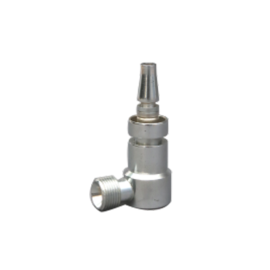Airways 1700 Single Pipeline Oxygen Adaptor
- Consumables & Disposables
- Critical Care & ICU Equipment
- Dental Equipment & Instruments
- Derma Products
- Diagnostics & Lab Equipment
- Home Care & Rehabilitation
- Hospital Furniture
- Operation Theatre (OT) Equipment
- Orthopedic & Prosthetics
- Others
- Pharma & Wellness
- Surgical Instruments
- Veterinary & Niche Medical Equipment
Your shopping cart is empty!
Product Description
This adaptor is designed to interface with a single-pipeline medical gas system supplying oxygen. It forms part of the pipeline accessories for clinical settings (e.g., hospitals, ICUs, operation theatres) where centralized oxygen supply is delivered via gas-pipelines. airways
Key Features & Functional Description
-
The mechanism of making and breaking the supply connection “is in the same manner as described under ‘Self-Sealing Valves’”. airways
-
In other words:
-
The adaptor likely uses a safety key or plug (insertion of the appropriate key or plug) to connect to the oxygen line.
-
When the connection is broken (removal of the plug / rotation of a collar) the gas flow is automatically cut off—preventing free flow or leak when disconnected. airways
-
-
It is intended for oxygen service only (as per label “– Oxygen”). airways
-
It belongs to a broader pipeline-accessory range by Airways Surgical (which includes self-sealing valves, twin pipeline adaptors, etc.) airways
Benefits / Why Use It
-
Safety: The self-sealing mechanism ensures that when the adaptor is not in use the pipeline remains sealed—reducing the risk of inadvertent gas discharge or cross-connection.
-
Standardization: Being part of the manufacturer’s pipeline accessories line, it helps maintain system compatibility and standard outlet/connection form for the facility.
-
Simplicity: The description suggests a straightforward mechanical operation (insertion of plug, rotate to eject) rather than complex valve assemblies.
-
Adaptability: For facilities upgrading or maintaining central oxygen pipeline systems, such an adaptor is a key interface point when connecting downstream equipment or modular outlets.
Important Technical/Installation Considerations
-
Even though full specs are not publicly listed, you should confirm the following with the supplier/manufacturer before purchase/installation:
-
Connection specifications: outlet thread size, adaptor inlet size, orientation (wall/ceiling mount), type of key/plug accepted.
-
Gas compatibility: Confirm it is certified for oxygen and no interchange-ability with other gases (e.g., nitrous, air) — important for safety. The manufacturer’s self-sealing valves list non-interchangeable outlet fittings. airways
-
Pressure rating and flow capacity: Ensure it can handle the pipeline pressure (typically medical-oxygen low-pressure system) and required flow rates for your application.
-
Material and oxygen-clean finish: For oxygen service, components need to be cleaned for oil/grease, and materials compatible with high-purity oxygen.
-
Installation & certification: The adaptor must be installed by qualified biomedical/medical-gas engineers and should comply with local regulations and standards for medical gas installations.
-
Spare key/plug and maintenance: Check for availability of spare safety key plugs and maintenance schedule (cleaning, leak testing, seal replacement).
-
-
Because the manufacturer’s website only provides a brief description for model 1700 (“Making & breaking the supply connection …”) but no detailed data sheet, request a detailed specification sheet (with model 1700, oxygen, pipeline adaptor) from the manufacturer or authorised distributor.
Typical Use Case
In a hospital ward or ICU where the centralized oxygen pipeline system supplies a wall/ceiling outlet, a facility may choose to install this adaptor (model 1700) in the outlet location. The downstream equipment (e.g., flowmeter, ventilator, oxygen outlet riser) would connect to this adaptor via the appropriate safety key plug. When equipment is removed, the adaptor ensures the pipeline remains sealed until the next connection. This helps maintain safety, prevents gas leaks, and supports proper installation practice.


